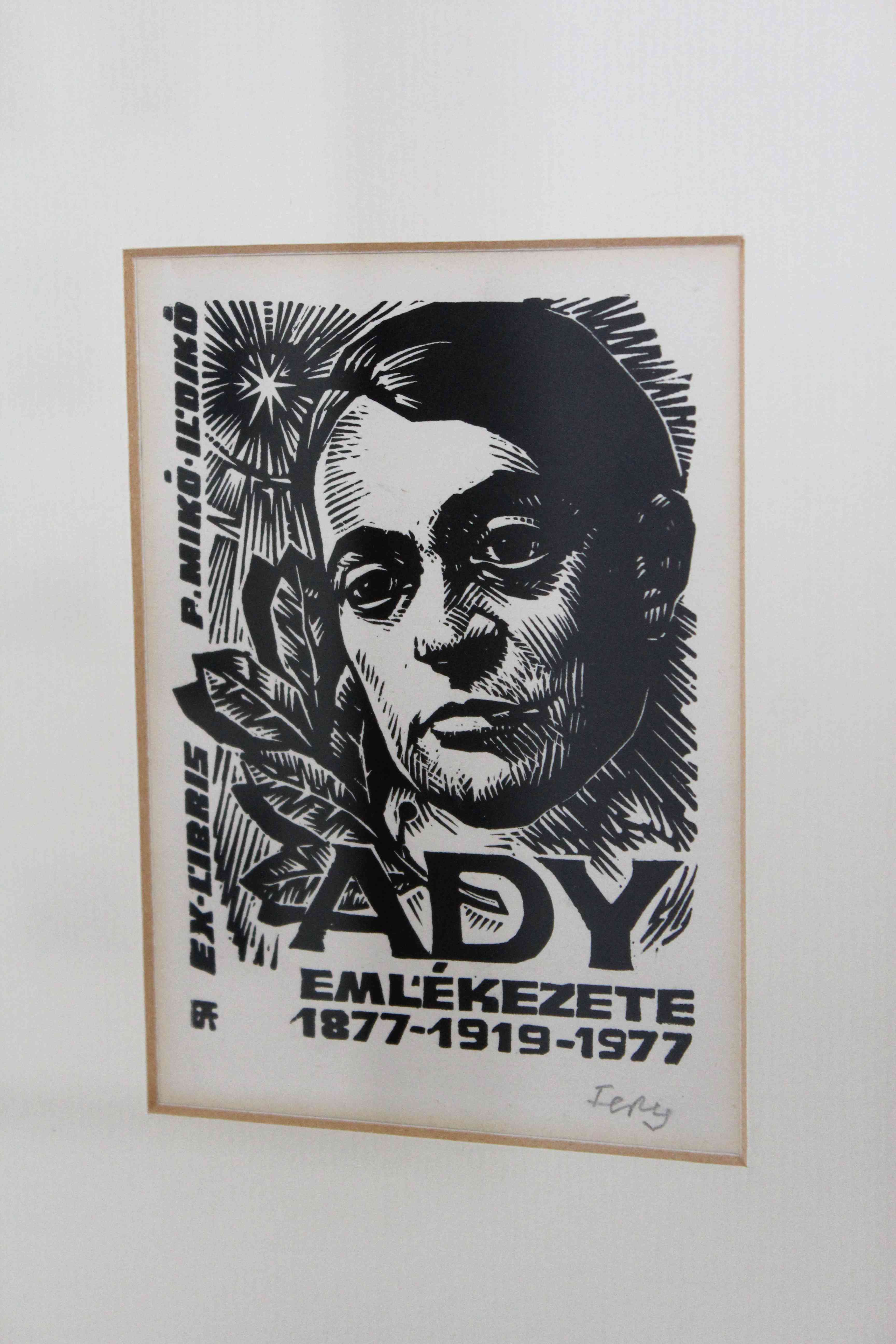Beside the postcards, the Zemplén M useum also has an ex libris collection of thirty-five thousand pieces.
useum also has an ex libris collection of thirty-five thousand pieces.
The ex libris is a small sized, copied graphic, that is glued on the inner page of the book. They usually contain the name of the owner, his crest, motto, all these are references to his personality, individuality, his favourite activity.
The most common text on the graphic was “EX LIBRIS X.Y.”, which means „FROM THE BOOKS OF X.Y.”. As explained abowe, the name of this genre originates from this latin expression, and although there were efforts to translate it (bookplate) the latin name stayed in use. The ancestor of the ex libris was the iron chain, which the proud book collector used to fasten his valuable codex to the bookshelf, to prevent it from being stolen. The first ex libris were crests, these peices didn't have the name of the owner on them yet. As the centuries passed, the ex libris turned into more and more beautiful papers with fine, artistic drawings, woodcuts. The ex libris is as old as printing itself, and was copied with the help of engraved plates. In the middle of the last century the stoneprinting was the most widespread technique. The beautifully created, artistic bookplates caught the attention of the lovers of graphic, and they began to exchange and collect ex libris. From this point ex libris were not only created and manufactured for book owners, but also to satisfy the needs of the collectors. By the end of the last century, there was a vivid collecting activity observed in Europe, Hungary also joined very early. The first ex libris exhibition took place in 1903 in the Iparművészeti Múzeum (Museum of Applied Arts), Hungary. The collectors founded organisations: for ex. between the two world wars Magyar Exlibris-gyűjtők és Grafikabarátok Egyesülete (Association of the Hungarian Exlibris Collectors and Graphic-Friends), Ajtósi Dürer Céh (Manufacture Ajtósi Dürer), and nowadays Kisgrafika Barátok Köre (Circle of Small Graphic-Friends).
In the fine arts there isn't another genre, that has so many international connections as the small graphics. The artists and the collectors are a big, international circle, among them the hungarian small graphic friends and artists are appreciated members.
The foundation, enrichment, classification and working with the collection is the achievement of Farkas István. He was the helper and friend of dr. Petrikovits László art collector for many years, and he also was the childhood friend of Fery Antal graphic designer. Among the works of the most famous hungarian graphic designers, the graphics of international artists also found a place in the collection. The most works in the collection were created by the famous artist Fery Antal, one of the most significant designers of his genre, who was born in our town. Our visitors can view a selection of his bookplates, plates, and other personal items. The museum sees the work with Fery Antals intellectual inheritence as one of its most important objectives.


